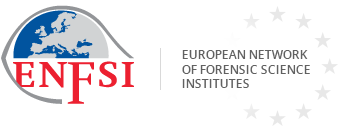Steps Towards a European Forensic Science Area (STEFA)
The combatting of global crime (e.g. people trafficking, terrorism, organized crime) is increasingly reliant on forensic science for investigation & prosecution. Thus, the sharing of forensic information across international borders requires mutual confidence in the forensic work undertaken in different countries. The EU Vision for European Forensic Science 2020 with the creation of a European Forensic Science Area aims to promote cooperation between police and judicial authorities across EU Member States in the field of forensic science.
The STEFA project is an important stepping stone in the realisation of the European Forensic Science Area contributing to key work streams that have been specified in the relevant EU Council Decisions. It brings together teams of experts from 31 organisations in 18 EU Member States (forensic institutes, research establishments, universities & other forensic service providers) along with 5 more organisations from other countries. There are ten specific activities within the project:
G1) Benchmarking forensic laboratories for strategic planning purposes.
G2) A fitted work tool for analytical data interpretation in forensic chemistry by multivariate analysis (chemometrics).
G3) Collaborative exercise covering the forensic disciplines of DNA, document examination, fingerprint examination and handwriting examination.
G4) Development of specialist fingermark visualisation training courses (FV Training).
G5) Development of a training and education concept for forensic hair and fibre experts.
G6) IT forensic tools test and validation database (ValiD).
G7) Empowering forensic genetic DNA databases for the interpretation of next generation sequencing profiles (DNA.bases).
G8) Best Practice Manual – Forensic examination of digitally captured signatures and handwritten entries.
G9) Best Practice Manual – Forensic comparison of soil traces.
G10) Best Practice Manual – Fingermark visualisation at the scene of crime.
The role of forensic science in the investigation and prosecution of crime continues to increase and expand. Furthermore, cross-border crime (terrorism, organised crime, people trafficking etc) remains very significant, meaning that forensic cooperation across international borders is increasingly important. Clearly, this is significant for the operational forensic experts working in forensic science laboratories, but it is also very relevant to the law enforcement stakeholders across the EU (police and judiciary) who rely upon forensic science in their work. Common forensic approaches in different countries inspire confidence such that police operations in one country can make use of forensic information generated in a different country. This is also applicable for the use of forensic information in support of courtroom prosecutions.
The EU has recognised the importance of harmonising forensic practices across all Member States. The first step was the publication of Council Conclusions in 2011 proposing the creation of a European Forensic Science Area (EU Council Conclusions, 3135th Justice and Home Affairs Council in Brussels, 13th/14th December 2011) linked with the Vision for European Forensic Science 2020. This contained a set of ten wide-ranging objectives. Further Council Conclusions were published in 2016 (EU Council Conclusions and Action Plan on the way forward in view of the creation of a European Forensic Science Area, 3473rd Justice and Home Affairs Council in Brussels, 9th June 2016). The new document includes a detailed action plan with six specific areas:
1. Best Practice Manuals for forensic disciplines.
2. Stimulating exchange of forensic information from databases, for example in the area of weapons and ammunition, explosives and drugs.
3. Proficiency tests and collaborative exercises for forensic disciplines.
4. Forensic awareness and training for law enforcement and justice communities.
5. Stimulate accreditation of forensic service providers and competence of forensic personnel on a voluntary basis,
6. Stimulating exchange of forensic data via Prϋm and improving quality.
Within the Action Plan ENFSI is allocated ‘Coordinator’ role (either alone or combination with Member States) in areas 1, 2, 3. Further, ENFSI is explicitly mentioned as a relevant contributor in areas 4 and 5. Thus, current ENFSI strategic plans are being significantly influenced by the EU Vision for European Forensic Science 2020 and the European Forensic Science Area. Previous EU Direct Action Grants awarded to ENFSI have been strongly directed towards the specific aims of the EU Vision for European Forensic Science 2020:
- Towards European Forensic Standardisation through Best Practice Manuals – TEFSBPM (HOME/2012/ISEC/MO/ENFSI/4000004278)
- Towards the Vision for European Forensic Science 2020 -TVEFS-2020 (HOME/2013/ISEC/MO/ENFSI/4000005962)
- Towards the Development of Pan-European Databases in Forensic Science (TDPEDFS) (HOME/2014/ISFP/AG/ENFS/7822)
The STEFA Project retains this focus and includes ten specific activities that will address the diverse areas that the EU has highlighted as the key work streams that will be required to create the European Forensic Science Area. These activities have been selected by the ENFSI Board as reflecting areas that will have a strong impact across the European forensic community. The project will be an important stepping stone in the realisation of the 2020 European Forensic Science Area.
Best Practice Manual for the Forensic Examination of Handwriting
